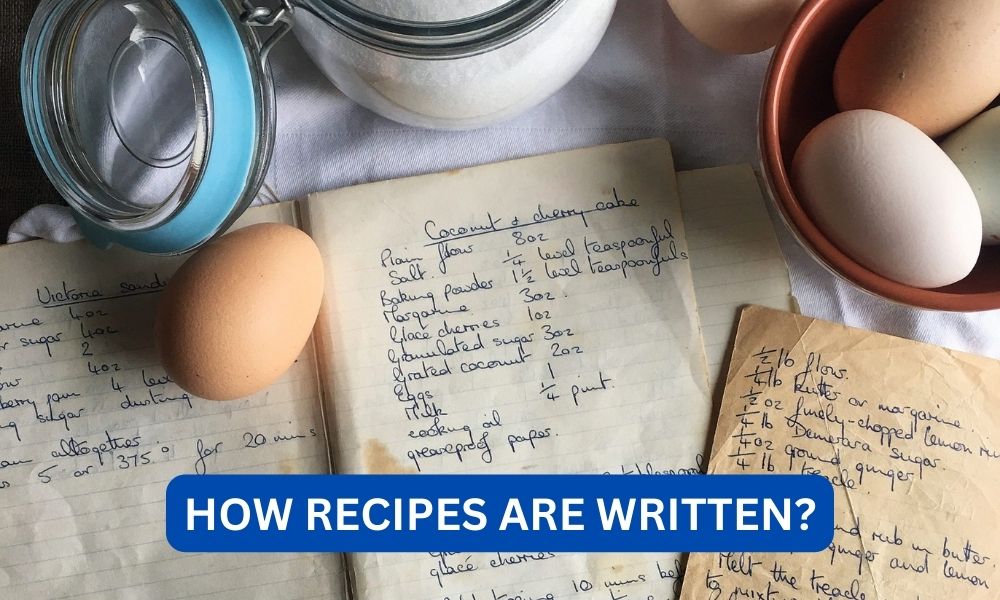Recipes are an essential part of our daily lives. They provide us with instructions on how to prepare delicious meals and treats, and they have been passed down from generation to generation. But have you ever stopped to think about how these recipes are written? How do they manage to convey the exact measurements and steps needed to create a dish? In this article, we will explore the art of recipe writing in English and uncover the secrets behind creating a successful recipe.
Contents
The Importance of Clear and Concise Instructions
When it comes to recipe writing, the most crucial aspect is to provide clear and concise instructions. A recipe is essentially a set of instructions that guide the reader on how to prepare a specific dish. Therefore, it is essential to ensure that these instructions are easy to follow and understand.
According to a study conducted by the University of Michigan, clear and concise instructions are crucial for successful recipe writing. The study found that recipes with clear and concise instructions were more likely to be followed accurately and resulted in a better-tasting dish. On the other hand, recipes with vague or confusing instructions often led to mistakes and a less desirable outcome.
Read:How to make chili recipeSo, how do recipe writers ensure that their instructions are clear and concise? Let’s take a closer look at the key elements of recipe writing.
Ingredients List
The first step in writing a recipe is to create a list of ingredients. This list should include all the necessary ingredients needed to prepare the dish. It is essential to list the ingredients in the order they will be used in the recipe. This helps the reader to follow along and ensures that they have all the necessary ingredients before starting.
For example, a recipe for chocolate chip cookies may have the following ingredients list:
- 1 cup all-purpose flour
- 1/2 teaspoon baking soda
- 1/2 teaspoon salt
- 1/2 cup unsalted butter, softened
- 1/2 cup granulated sugar
- 1/4 cup brown sugar
- 1 egg
- 1 teaspoon vanilla extract
- 1 cup semisweet chocolate chips
As you can see, the ingredients are listed in the order they will be used in the recipe, starting with the dry ingredients and ending with the chocolate chips.
Measurements
Another crucial aspect of recipe writing is providing accurate measurements. The measurements should be precise and consistent throughout the recipe. This is especially important when it comes to baking, where even a slight variation in measurements can affect the final result.
Read:How not to diet recipesThere are two main systems of measurement used in recipe writing: the metric system and the imperial system. The metric system is based on units of 10, making it easier to convert between different measurements. On the other hand, the imperial system uses units such as cups, tablespoons, and teaspoons, which can be more challenging to convert.
When writing a recipe, it is essential to choose one system of measurement and stick to it. This helps to avoid confusion and ensures that the reader can easily follow the instructions.
Step-by-Step Instructions
The most crucial part of a recipe is the step-by-step instructions. These instructions should be written in a clear and concise manner, using simple language that is easy to understand. It is essential to break down the instructions into small, manageable steps, making it easier for the reader to follow along.
Here are some tips for writing clear and concise step-by-step instructions:
- Start each step with an action verb, such as “mix,” “chop,” or “bake.”
- Use specific measurements, such as “1 cup” or “1 teaspoon.”
- Include any necessary cooking techniques, such as “stirring constantly” or “simmering.”
- Be precise with cooking times and temperatures.
- Include any important notes or tips, such as “let the dough rest for 30 minutes before baking.”
Let’s take a look at an example of step-by-step instructions for our chocolate chip cookie recipe:
Read:how to read a recipe- In a medium bowl, whisk together the flour, baking soda, and salt.
- In a separate large bowl, cream together the butter, granulated sugar, and brown sugar until light and fluffy.
- Add in the egg and vanilla extract, and mix until well combined.
- Slowly add the dry ingredients to the wet ingredients, mixing until just combined.
- Fold in the chocolate chips.
- Cover the dough and refrigerate for at least 30 minutes.
- Preheat the oven to 375°F (190°C).
- Line a baking sheet with parchment paper.
- Using a cookie scoop, drop dough onto the prepared baking sheet, leaving about 2 inches between each cookie.
- Bake for 10-12 minutes, or until the edges are lightly golden.
- Let the cookies cool on the baking sheet for 5 minutes before transferring them to a wire rack to cool completely.
As you can see, the instructions are broken down into small, manageable steps, making it easier for the reader to follow along.
The Role of Language in Recipe Writing
Language plays a crucial role in recipe writing. It is essential to use language that is easy to understand and avoids any confusion. This is especially important when it comes to ingredients and cooking techniques that may be unfamiliar to the reader.
When writing a recipe, it is essential to use simple and concise language. Avoid using technical terms or jargon that may be unfamiliar to the reader. Instead, use everyday language that is easy to understand.
It is also important to be consistent with the language used throughout the recipe. For example, if you refer to an ingredient as “butter” in one step, do not suddenly switch to “unsalted butter” in another step. This can cause confusion and may result in the reader using the wrong ingredient.
Another aspect to consider is the use of measurements. As mentioned earlier, it is crucial to be consistent with measurements throughout the recipe. However, it is also essential to use measurements that are familiar to the reader. For example, if you are writing a recipe for an American audience, it would be best to use measurements such as cups and tablespoons, rather than grams and milliliters.
The Importance of Testing and Revising Recipes
Recipe writing is not a one-time process. It requires testing and revising to ensure that the instructions are accurate and easy to follow. This is especially important for complex recipes or recipes that involve multiple steps.
Before publishing a recipe, it is essential to test it multiple times to ensure that the instructions are accurate and the final result is as expected. This also allows for any necessary adjustments to be made, such as changing the cooking time or adjusting the measurements.
It is also important to have others test the recipe and provide feedback. This can help to identify any potential issues or confusion in the instructions. Based on this feedback, the recipe can be revised and improved before being published.
Case Study: The Joy of Cooking
The Joy of Cooking is a classic cookbook that has been in print since 1931. It has sold over 18 million copies and is considered a staple in many kitchens. The success of this cookbook can be attributed to its clear and concise recipe writing.
The Joy of Cooking was written by Irma S. Rombauer, who was not a professional chef or writer. However, she had a passion for cooking and a desire to share her knowledge with others. She wrote the cookbook in a conversational tone, using simple language that was easy to understand. This made the recipes accessible to a wide audience, and the cookbook quickly became a bestseller.
Rombauer also included helpful tips and notes throughout the recipes, making them more user-friendly. For example, in her recipe for “Perfect Fried Chicken,” she includes a note that says, “If you have time, let the chicken stand in the refrigerator for a few hours before frying. This will make the crust crisper.” These small details and tips make a big difference in the final result and show the importance of thorough recipe writing.
Conclusion:
In conclusion, recipe writing is an art that requires attention to detail and a clear understanding of the target audience. Clear and concise instructions, accurate measurements, and simple language are all essential elements of successful recipe writing. It is also crucial to test and revise recipes to ensure that they are accurate and easy to follow. By following these guidelines, you can create recipes that are not only delicious but also easy for others to replicate.
So, the next time you follow a recipe, take a moment to appreciate the thought and effort that goes into writing it. And if you are a recipe writer, remember the importance of clear and concise instructions in creating a successful dish. Happy cooking!








